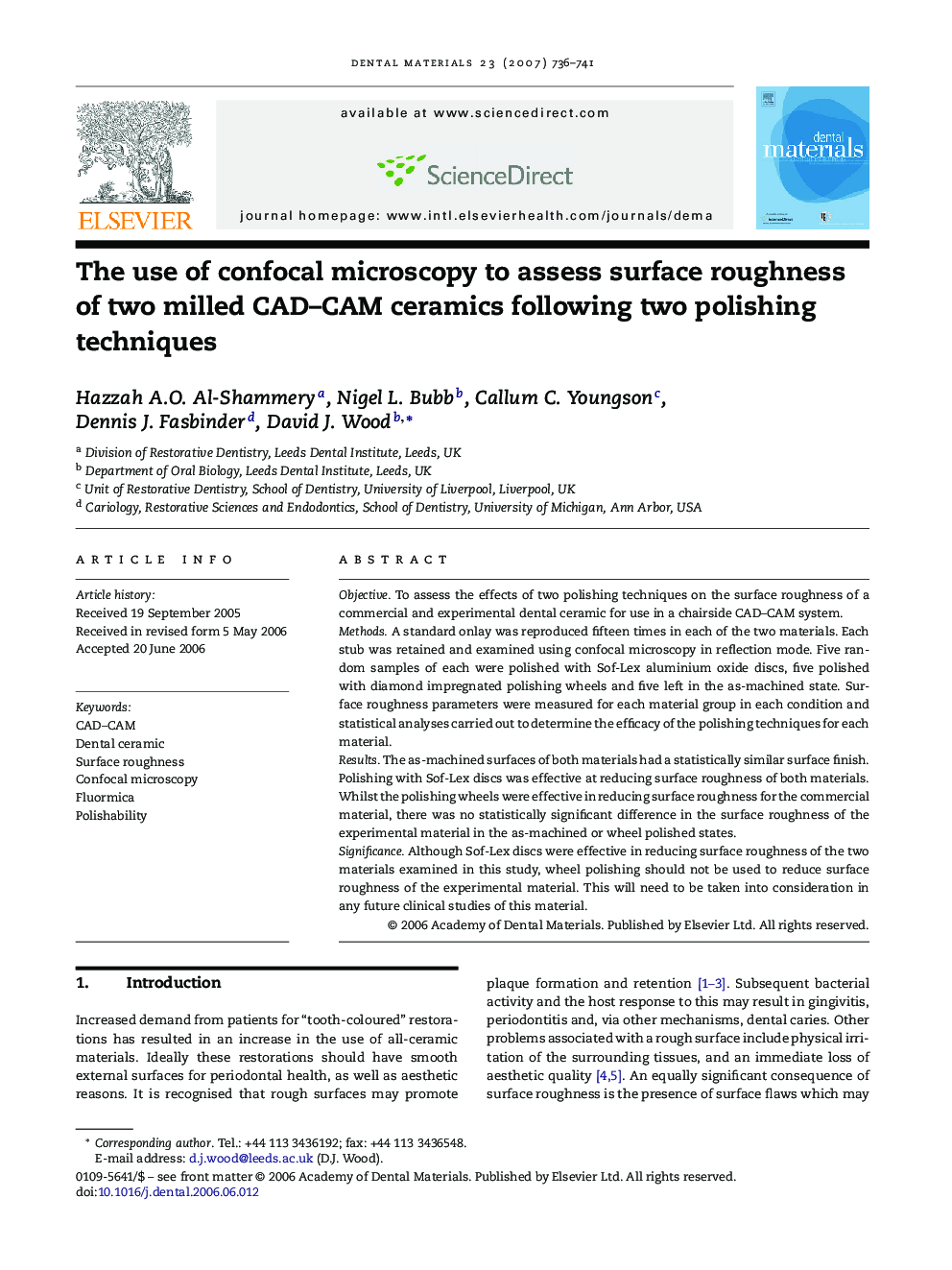| Article ID | Journal | Published Year | Pages | File Type |
|---|---|---|---|---|
| 1423335 | Dental Materials | 2007 | 6 Pages |
ObjectiveTo assess the effects of two polishing techniques on the surface roughness of a commercial and experimental dental ceramic for use in a chairside CAD–CAM system.MethodsA standard onlay was reproduced fifteen times in each of the two materials. Each stub was retained and examined using confocal microscopy in reflection mode. Five random samples of each were polished with Sof-Lex aluminium oxide discs, five polished with diamond impregnated polishing wheels and five left in the as-machined state. Surface roughness parameters were measured for each material group in each condition and statistical analyses carried out to determine the efficacy of the polishing techniques for each material.ResultsThe as-machined surfaces of both materials had a statistically similar surface finish. Polishing with Sof-Lex discs was effective at reducing surface roughness of both materials. Whilst the polishing wheels were effective in reducing surface roughness for the commercial material, there was no statistically significant difference in the surface roughness of the experimental material in the as-machined or wheel polished states.SignificanceAlthough Sof-Lex discs were effective in reducing surface roughness of the two materials examined in this study, wheel polishing should not be used to reduce surface roughness of the experimental material. This will need to be taken into consideration in any future clinical studies of this material.
